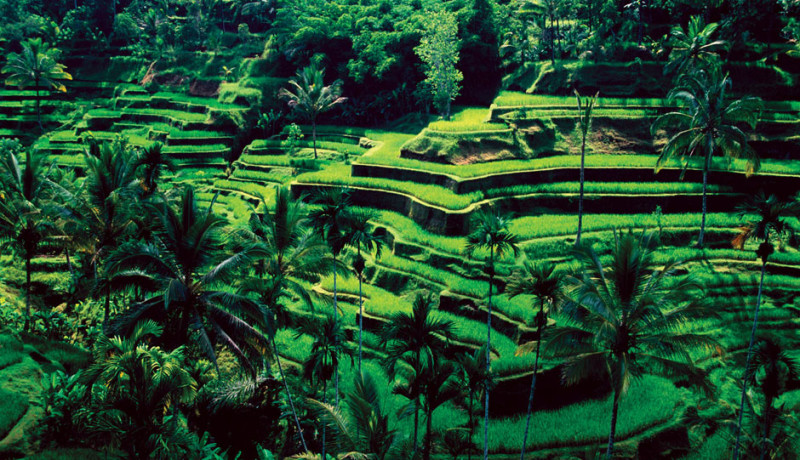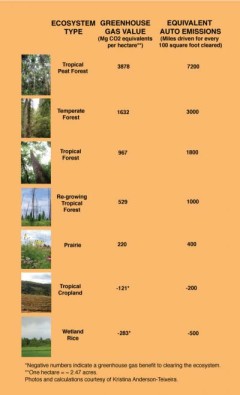Greenhouse Gas Value of Ecosystems
May 27, 2010
on
on

Researchers at the University of Illinois have developed a new, more accurate method of calculating the change in greenhouse gas emissions that results from changes in land use.
The new approach, described in the journal Global Change Biology, takes into account many factors not included in previous methods, the researchers report. There is an urgent need to accurately assess whether particular land-use projects will increase or decrease greenhouse gas emissions, said Kristina Anderson-Teixeira, a postdoctoral researcher in the Energy Biosciences Institute at Illinois and lead author of the new study. The greenhouse gas value (GHGV) of a particular site depends on qualities such as the number and size of plants; the ecosystem's ability to take up or release greenhouse gases over time; and its vulnerability to natural disturbances, such as fire or hurricane damage, she said.
a postdoctoral researcher in the Energy Biosciences Institute at Illinois and lead author of the new study. The greenhouse gas value (GHGV) of a particular site depends on qualities such as the number and size of plants; the ecosystem's ability to take up or release greenhouse gases over time; and its vulnerability to natural disturbances, such as fire or hurricane damage, she said.
This new method allows scientists to compare the long-term effects of clearing a forest, for example, to the costs of other greenhouse gas emissions, such as those that result from burning fossil fuels for transportation, electricity, heat or the production of biofuels. "In general, unmanaged ecosystems – those that we are leaving alone, such as a virgin forest or an abandoned farm where trees are re-growing – are going to have positive greenhouse gas values," Anderson-Teixeira said. Managed ecosystems such as croplands or pastures generally have low or negative greenhouse gas values, she said.
In short, it's a life-cycle analysis of ecosystems. How much CO2 do the ecosystems absorb and how much greenhouse gas do they emit. Sound pretty simple, but still, the infographic with conclusions of this research surprised me a bit.
Via Eurekalert
The new approach, described in the journal Global Change Biology, takes into account many factors not included in previous methods, the researchers report. There is an urgent need to accurately assess whether particular land-use projects will increase or decrease greenhouse gas emissions, said Kristina Anderson-Teixeira,
 a postdoctoral researcher in the Energy Biosciences Institute at Illinois and lead author of the new study. The greenhouse gas value (GHGV) of a particular site depends on qualities such as the number and size of plants; the ecosystem's ability to take up or release greenhouse gases over time; and its vulnerability to natural disturbances, such as fire or hurricane damage, she said.
a postdoctoral researcher in the Energy Biosciences Institute at Illinois and lead author of the new study. The greenhouse gas value (GHGV) of a particular site depends on qualities such as the number and size of plants; the ecosystem's ability to take up or release greenhouse gases over time; and its vulnerability to natural disturbances, such as fire or hurricane damage, she said.This new method allows scientists to compare the long-term effects of clearing a forest, for example, to the costs of other greenhouse gas emissions, such as those that result from burning fossil fuels for transportation, electricity, heat or the production of biofuels. "In general, unmanaged ecosystems – those that we are leaving alone, such as a virgin forest or an abandoned farm where trees are re-growing – are going to have positive greenhouse gas values," Anderson-Teixeira said. Managed ecosystems such as croplands or pastures generally have low or negative greenhouse gas values, she said.
In short, it's a life-cycle analysis of ecosystems. How much CO2 do the ecosystems absorb and how much greenhouse gas do they emit. Sound pretty simple, but still, the infographic with conclusions of this research surprised me a bit.
Via Eurekalert
Read full article
Hide full article



Discussion (0 comments)